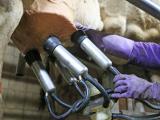Jan 3, 2012
China confirms H5N1 death
A man who died Dec 31 in China's Guangdong province, near Hong Kong, was confirmed to have harbored the highly pathogenic H5N1 influenza strain, according to a story yesterday from Xinhua, the country's state-run news service. The 39-year-old man, from the Boa'an district of Shenzhen, was hospitalized with a fever on Dec 21 and died of multiple organ failure, according to the story, which cited a statement by the Shenzhen Disease Control Center. Genetic analysis indicated the virus is similar to those found in migrant birds in Hong Kong in the past year, but a local official said there is no clear evidence the man had close contact with poultry or migrant birds, the story said. The Guangdong Department of Agriculture said no outbreaks have been reported in the province. Hong Kong, however, has reported recent infections in a live-market chicken and in wild birds. If the World Health Organization (WHO) confirms the lab results, the case will be the country's only WHO-confirmed H5N1 illness in 2011. The last was in June 2010. The WHO has confirmed 40 H5N1 cases in China since 2003, 26 of them fatal.
Jan 2 Xinhua report
Hong Kong tests find H5 in two wild birds
Preliminary tests on two black-headed gulls found dead in Hong Kong were positive the an H5 avian influenza virus, according to a statement today from the region's Agriculture, Fisheries, and Conservation Department (AFCD). Further tests are being conducted to confirm the findings. The birds were found on Dec 30 and Jan 1 in different locations, one in Tuen Mun and the other near a soccer field in Lantau. The statement said no poultry farms are within 3 kilometers of where the birds were found and that the gulls are common winter visitors to the area. Occasional reports of the virus in wild birds are not unusual for Hong Kong. The release cautioned people to avoid contact with wild birds, domestic poultry, and their droppings.
Jan 3 AFCD press release
Study: Steroids did not improve survival in severely ill H1N1 patients
Spanish researchers report that corticosteroid treatment did not improve survival in severely ill patients during the 2009 H1N1 flu pandemic, according to a report yesterday in the Journal of Infection. The prospective observational study focused on patients with primary viral pneumonia who where treated in 148 intensive care units (ICUs). The researchers gathered data on 372 such patients, of whom 136 (36.6%) received corticosteroid treatment. The overall death rate was 17.7%, with little difference between the steroid recipients (18.4%) and other patients (17.4%). After adjusting for various potential confounders, the investigators found that steroids had no effect on mortality, with a hazard ratio of 1.06 (95% confidence interval [CI], 0.626-1.801). The only conditions more common in steroid recipients than nonrecipients were obesity (35.6% vs 47.8%, P = .021) and asthma (7.6% vs 15.4%, P = .825). The authors note that two other recent studies dealing with H1N1 patients, but not limited to those with viral pneumonia, found that steroid treatment was associated with higher mortality. In 2007 the WHO warned against the routine use of steroids in H5N1 avian flu patients, saying the drugs were not effective and at high doses could be harmful.
Jan 2 J Infect study
April 2007 CIDRAP News story about WHO warning
Travel, rare chicken, environmental exposure may raise Campylobacter risk
Factors that increase the risk of Campylobacter infection include traveling abroad, eating undercooked chicken, environmental exposure such as drinking water, and direct contact with farm animals, according to a meta-analysis today in Epidemiology and Infection. Danish investigators identified 38 case-control studies of sporadic campylobacteriosis, conducted between 1983 and 2004 in 14 countries on three continents, that met their quality criteria. They found odds ratios (ORs) to be highest for the following risk factors: travel (4.91; 95% confidence interval [CI], 2.93-8.23), eating undercooked chicken (3.42; 95% CI, 2.16-5.42), exposure to bird droppings (3.24; 95% CI, 1.97-5.34), direct contact with farm animals (2.62; 95% CI, 2.02-3.40), drinking untreated water (2.40; 95% CI, 1.76-3.26), consuming unpasteurized dairy products (2.29; 95% CI, 1.69-3.09), and eating restaurant chicken (2.06; 95% CI, 1.86-2.27). The team found contact with farm animals to be an especially important factor in children. They conclude, "Because collected studies were conducted in different time periods and in a wide variety of regions, where the relative importance of sources for human campylobacteriosis can evidently vary, the representativeness of obtained estimates should be evaluated with care. Nonetheless, results give an indication of the most important sources of campylobacteriosis, which can be particularly useful for countries with no effective surveillance."



















